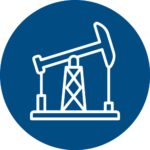Products
HYDRAMIX HYDRO CARBON WATER SEPARATION

Hydramix Process
Hydramix is a process for the removal of hydrocarbons and other pollutants from contaminated water.
The Hydramix process efficiently removes oil, fat and Grease and other contaminants from water by means of a multi stage treatment cycle, tailored to each application to produce 99.9 % pollutant free water.
These basic stages being:
- Stage 1 – Ions produced by the Ion generator enter mixers along with polluted water and poly-electrolyte.
- Ions will vary depending on application.
- Stage 2– Mixture is transferred to calming tank where settling occurs.
- Flocculation and precipitation occurs
- Stage 3– Flotation to remove Flocs, along with removal of precipitate.
- Clean water as product
- Stage 1 – Ions produced by the Ion generator enter mixers along with polluted water and poly-electrolyte.
The Hydramix process can be tailored to treat client specific contaminated waste waters
Types of Contaminants Remove
- Dissolved Oil – Oil droplets < 2 micron.
- Solids Coated with Oil – Heavy solids denser than water.
- Heavy metals.
- Petrochemicals

Advantages
- Locally Manufactured process
- 30 years experience in
- Hydrocarbon separation
- Low Capital Cost
- Low maintenance cost
- Simple to operate and a reliable process
- Reduced moisture content solids production
- Easy Installation and expansion
- Small foot print
- Robust process
- Can be incorporated with Hydraspin
Benefits
- Easily accessible data generation anytime.
- Easy plant monitoring and control ability.
- Faster treated water results production.
- Consistent compliant water generation.
- Reduces need to store contaminated water.
- Low capital cost.
- Low Operational cost for monitoring programs.
- Versatile in treating varying hydrocarbon loadings
Typical Applications
- Produced water.
- Frac water.
- Brine filtration.
- Fire water protection.
- Heat exchanger
- protection.
- Secondary recovery treatment.
- Tertiary recovery and process.
- Cooling water
Mining Industry
- Solvent extraction.
- Mining workshops.
- Wash bay systems.
- Oil storage tank farms .
- Bulk fuel storage facilities.
- Storm water run-off from contaminated areas.
- Process water treatment.
- Desanding. (oil sands).







